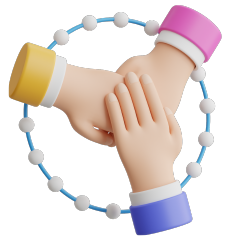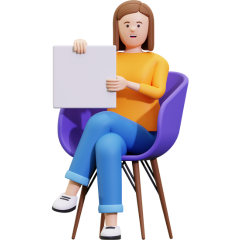What is Multiple Sclerosis?

In Australia, more than 33,000 people are currently living with MS. It targets the nervous system and can be hard to see from the outside, but it can change how a person moves, thinks or feels.
30 May is World Multiple Sclerosis Day, a global moment to raise awareness, challenge stigma, and recognise the experiences of people living with multiple sclerosis (MS).
Table of Contents
In Australia, more than 33,000 people are currently living with MS. It targets the nervous system and can be hard to see from the outside, but it can change how a person moves, thinks or feels.
So, what exactly is MS? And why does it matter that we talk about it today?
Understanding Multiple Sclerosis
Multiple sclerosis is a chronic neurological condition that affects the central nervous system which includes the brain and spinal cord. Multiple sclerosis occurs when the immune system mistakenly attacks the myelin, the protective layer that wraps around nerves. When this coating is damaged, it disrupts the messages travelling between the brain and the rest of the body.
Because MS can affect different parts of the nervous system, the symptoms vary widely from person to person. For some, multiple sclerosis might cause occasional issues with balance or fatigue. For others, it can gradually affect mobility or speech. The condition is unpredictable, and symptoms often come and go without warning.
While MS has no cure yet, early diagnosis and ongoing support can make a huge difference. Today, with the right therapies and assistance, many people with multiple sclerosis live full, active lives.
What are the symptoms of Multiple Sclerosis?
There’s no single way MS shows up. Symptoms can differ in type, intensity, and frequency. Some people experience relapsing-remitting multiple sclerosis, where symptoms flare up and then settle. Others may have progressive multiple sclerosis, which worsens over time.
- Ongoing fatigue
- Numbness or tingling in the limbs
- Muscle spasms or weakness
- Difficulty walking or maintaining balance
- Changes in vision (blurred, double, or loss of vision)
- Cognitive issues like memory lapses or “brain fog”
- Slurred speech or swallowing difficulties
Multiple sclerosis is often called an “invisible illness” because many of its symptoms are not outwardly visible. A person might appear physically fine even while dealing with challenges that affect their body and mind every day.
Multiple Sclerosis risk and diagnosis
MS is typically diagnosed between the ages of 20 and 40, though it can appear earlier or later. It affects three times more women than men, and the cause is still not fully understood.
Australia has seen a sharp rise in multiple sclerosis diagnoses in recent years. Between 2017 and 2021, the national prevalence increased by 30% with significantly more people being diagnosed across all age groups. Geography, genetics, and environmental factors such as low vitamin D levels are thought to play a role in this trend.
Diagnosis usually involves a neurological exam, MRI scans, and sometimes a lumbar puncture to rule out other conditions.
Living with Multiple Sclerosis in Australia
MS affects more than just health. It impacts work, family life, mental wellbeing and identity. Some people may need mobility aids, support with energy management or changes to their home setup. Others may need flexibility at work or extra mental health support during difficult periods.
What’s important to know is that MS doesn’t define a person. With the right tools and team, people with MS can continue their careers, raise families, travel, exercise and thrive on their own terms.
It’s also worth acknowledging the role of carers—family members, support workers and friends—who often go above and beyond to help manage the everyday challenges that MS can bring.
Thanks to medical advances and greater public awareness, living with MS in Australia today looks very different than it did a generation ago.
The NDIS plays a crucial role in enabling Australians with MS to access therapies, equipment and supports tailored to their needs. Occupational therapy, physiotherapy, speech therapy and mental health services all help maintain independence and quality of life.
At Leora, we’ve seen how consistent support and personalised care planning empower our clients. We walk alongside individuals through their highs and lows, helping them set goals, build confidence, and live with autonomy.
Related stories:
What can you do on World Multiple Sclerosis Day?
Living well with MS is about more than treatment. It’s about community, support, understanding and access.
Here’s how you can take part in World Multiple Sclerosis Day:
- Learn one new thing about MS and share it with others
- Read or listen to a lived experience
- Be mindful of invisible conditions and don’t assume what you can’t see
- Advocate for flexibility and access at work or in your organisation
- Check in with someone who might be managing a chronic condition in silence
Every small action adds to a bigger picture of inclusion.
Support that makes a difference
Living with multiple sclerosis means having to plan for unpredictability. That’s why consistent support matters so much. Leora’s disability support team includes support workers, allied health professionals and care planners who understand the nuances of MS and tailor their approach to each client’s goals.
The NDIS allows people to build the support they need across health, home, social and community life. We work closely with participants to help make their plan practical, sustainable and empowering.
If you or someone you know is navigating MS and would like to explore how Leora can help, reach out to our team today to learn more. We’re here to help.
***
Want more stories and insights like this? Subscribe to our monthly newsletter for updates on disability support, client stories and helpful NDIS tips delivered straight to your inbox.





